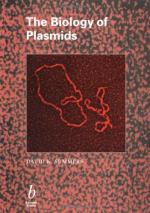|
This section contains 698 words (approx. 3 pages at 300 words per page) |

|
Episomes, plasmids, insertion sequences, and transposons are elements of DNA (deoxyribonucleic acid) that can exist independent of the main, or genomic, DNA.
An episome is a non-essential genetic element. In addition to its independent existence, an episome can also exist as an integrated part of the host genome of bacteria. It originates outside the host, in a virus or another bacterium. When integrated, a new copy of the episome will be made as the host chromosome undergoes replication. As an autonomous unit, the viral episome genetic material destroys the host cell as it utilizes the cellular replication machinery to make new copies of itself. But, when integrated into the bacterial chromosome they multiply in cell division and are transferred to the daughter cells. Another type of episome is called the F factor. The F factor is the best...
|
This section contains 698 words (approx. 3 pages at 300 words per page) |

|


